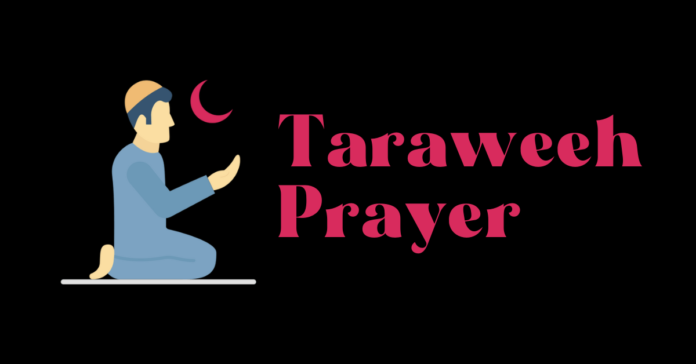Understanding the Essence of Taraweeh Dua
As the tranquil month of Ramadan dawns upon the Muslim community worldwide, hearts brim with anticipation, and souls ignite with fervor. Among the treasured acts of worship during this sacred month is Taraweeh, a special nightly prayer performed by Muslims. It’s not just a series of physical movements but a profound spiritual journey that strengthens one’s connection with the Divine. In this comprehensive guide, we delve deep into the essence of Taraweeh, exploring its significance, method, and the cherished supplication known as “Taraweeh ki Dua.”
What is Taraweeh
Taraweeh, derived from the Arabic word ‘raha,’ meaning ‘to rest’ or ‘to relax,’ embodies a nightly prayer performed by Muslims during the month of Ramadan. It is observed after the obligatory Isha prayer and holds immense spiritual significance in Islam. The Taraweeh prayer serves as a means for believers to seek forgiveness, draw closer to Allah, and reflect on the teachings of the Quran.
Taraweeh Dua and its Transliteration
At the culmination of each Taraweeh prayer, Muslims invoke a special supplication known as “Taraweeh Dua.” This heartfelt prayer seeks mercy, guidance, and blessings from the Almighty. Let us recite it with sincerity:
“Allahumma innaka ‘afuwwun tuhibbul ‘afwa fa’fu ‘anni”
This beautiful prayer translates to: “O Allah, indeed You are Pardoning and You love pardon, so pardon me.”
During the rest after every 4 rakats of Tarawih. It is good to read Taraweeh Dua
سُبْحَانَ ذِي الْمُلْكِ وَالْمَلَكُوتِ، سُبْحَانَ ذِي الْعِزَّةِ وَالْعَظَمَةِ وَالْحَيَاءِ وَالْقُدْرَةِ وَالْكِبْرِيَاءِ وَالْجَبَرُوتِ، سُبْحَانَ الْمَلِكِ الْحَيِّ الَّذِي لَا يَنَامُ وَلَا يَمُوتُ، سُبُّوحٌ قُدُّوسٌ رَبُّنَا وَرَبُّ الْمَلَائِكَةِ وَالرُّوحِ، اللَّهُمَّ أَجِرْنَا مِنَ النَّارِ. يَا مُجِيرُ، يَا مُجِيرُ، يَا مُجِيرُ.
Transliteration of Taraweeh Dua:
Subhana Zil Mulki Wal-Malakoot. Suhana Zil Izzati Wal-Azamati Wal-Hayibati Wal-Qudrati Wal-Kibriyaai Wal-Jabaroot. Subhan Al-Malikil Hayyillazi Laa Yanamu Walaa Yamootu Subbuhun Quddoosun Rabbuna Wa-Rabbul Malaikati War-Rooh. Allahumma Ajirna Minan Naar. Ya Mujeeru, Ya Mujeeru, Ya Mujeeru.
How to Pray Taraweeh Dua
The Taraweeh prayer follows a prescribed method, offering a serene rhythm that aligns with the tranquility of Ramadan nights. Here’s a step-by-step guide to performing Taraweeh:
- Niyyah (Intention): Begin by making a sincere intention in your heart to perform Taraweeh prayer.
- Perform Isha Prayer: Pray the obligatory Isha prayer in congregation at the mosque or individually at home.
- Commencement: Taraweeh starts with the recitation of Surah Al-Fatiha followed by a portion of the Quran, usually recited by the Imam.
- Rakats: Taraweeh consists of sets of two rakats (units of prayer). Each set is followed by a brief rest (Tarweeha).
- Tasleem: After completing the desired number of rakats, conclude Taraweeh with the Tashahhud and Tasleem, followed by the Taraweeh ki Dua.
How Many Rakats in Taraweeh?
The number of rakats in Taraweeh can vary among different schools of thought within Islam. However, the most common practice is to perform 20 rakats, divided into ten sets of two rakats each. Some may opt for eight rakats or more based on their adherence to different interpretations.
Is Taraweeh Mandatory?
Taraweeh is categorized as a voluntary (Sunnah) prayer in Islam and is not obligatory. However, it holds immense spiritual rewards, and devout Muslims eagerly participate in this nightly ritual during Ramadan to earn blessings and draw closer to Allah.
Taraweeh Dua in Quran
While the specific mention of Taraweeh in the Quran is indirect, the concept of night prayers, including Taraweeh, is rooted in the Quranic teachings. The Quran encourages believers to engage in worship during the nights of Ramadan, seeking forgiveness and guidance through prayers and reflection.
What is the Time of Taraweeh?
Taraweeh is performed after the obligatory Isha prayer, ideally during the later part of the night. Traditionally, it is conducted shortly after the Isha prayer in mosques, allowing worshippers to gather and participate collectively. However, individuals can also perform Taraweeh individually at home during the same time frame.
In essence, Taraweeh embodies a sacred journey of spiritual rejuvenation and devotion for Muslims during the blessed month of Ramadan. It serves as a reminder of the importance of prayer, reflection, and seeking closeness to the Divine. As we immerse ourselves in the tranquility of Taraweeh, let us seize the opportunity to connect with Allah, seek forgiveness, and embrace the blessings of this auspicious month.
May our hearts be illuminated with the divine light of Ramadan, and may our prayers during Taraweeh be accepted, Ameen.

